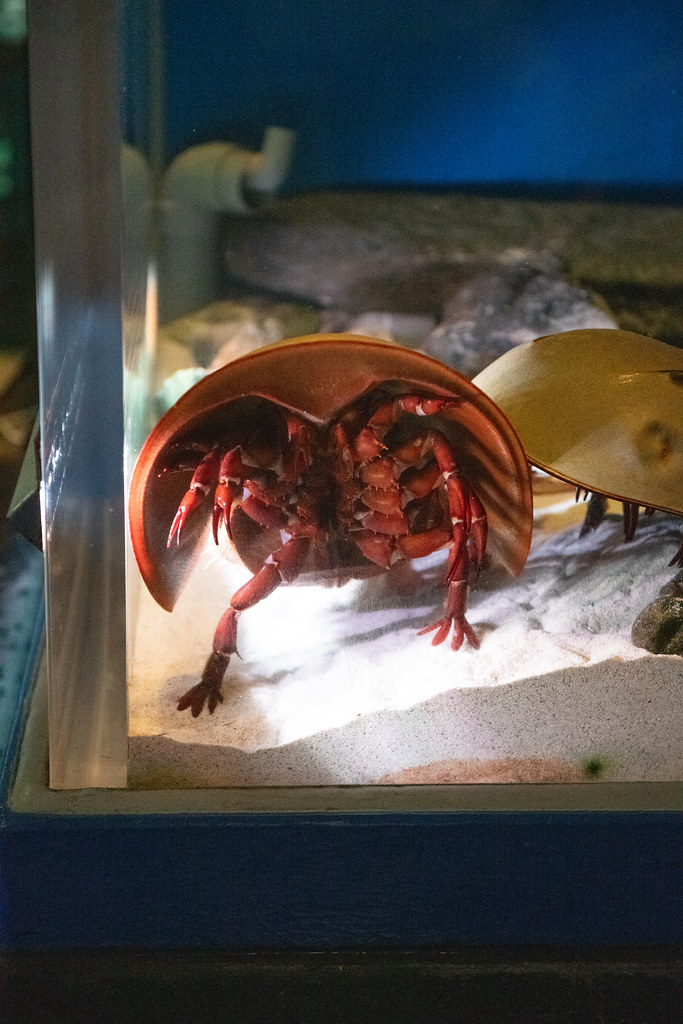#Living Fossil
Text
🐠 Daily Fish Fact: 🐠
Coelacanths were once known only from fossils and were thought to have gone extinct approximately 65 million years ago. Much to scientists' surprise, the first living coelacanth was discovered in 1938. Numerous characteristics are unique to this fish. Among them is the presence of a "rostral organ" in the snout that is part of the electrosensory system, and an intracranial joint or "hinge" in the skull that allows the anterior portion of the cranium to swing upwards, greatly enlarging the gape of the mouth.


#coelacanth#living fossil#old as dinosaurs#old fish#ancient#unique#unique fish#fish#fish facts#facts about fish#daily fish#daily fish facts#marine#ocean#marine life#ocean life#marine animal#ocean animal#fishes#fish post#marine biology
396 notes
·
View notes
Text

🐟 IT'S COELACANTH DAY! 🐟
On December 23rd, 1938, an unusual fish was caught off the coast of South Africa near the mouth of the Chalumna river by Captain Henrik Goosen. Recognizing its potential significance, he showed it to his friend and local museum curator, Marjorie-Courtenay Latimer, who reluctantly had it taxidermied to preserve it long enough for her colleague J. L. B. Smith to identify, as he was unfortunately unavailable while the specimen was fresh and easier to study.
Nonetheless, Smith identified the animal as a modern-day descendant of coelacanths, a fish up to then only known through fossils over 66 million years old and presumed long extinct. Smith gave the animal the scientific name Latimeria chalumnae, in honor of his colleague's contribution to the historic discovery as well as the river they were found somewhat close to, I guess.

Thanks to the combined efforts of these amateur and professional naturalists, people all around the world can admire and protect these wonderful, bizarre, and unique animals. Now we can celebrate the re-birthday of the coelacanth every year on December 23rd!.
🐟Happy Coelacanth Day Everyone!🐟
119 notes
·
View notes
Text
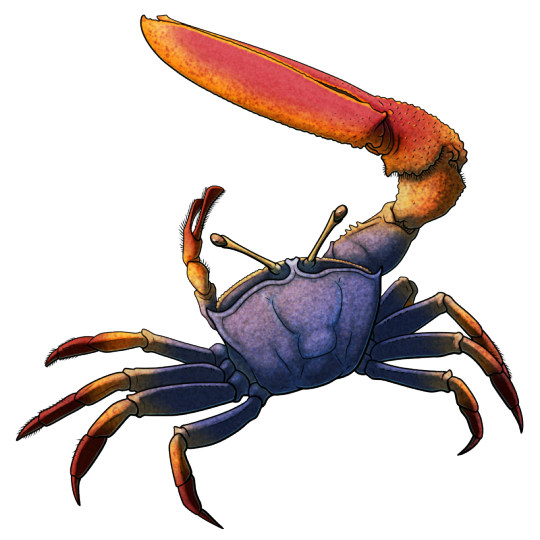
Strange Symmetries #20: The 16 Million Year Fiddler Crab Rave
Many decapod crustaceans have slightly asymmetrical pincers, often with one claw being chunkier and specialized for "crushing" while the other is more slender and used for "cutting".
But fiddler crabs take this sort of asymmetry to the extreme as part of their sexual dimorphism – males have one massively oversized claw, which is used for both visual display to potential mates and for physical fights against rivals.
Some of the earliest fiddler crabs are known from the Miocene of what is now northern Brazil. Although the fossils have been given several different taxonomic names since their discovery in the 1970s (including Uca maracoani antiqua, Uca antiqua, and Uca inaciobritoi) they're currently considered to be indistinguishable from the modern Brazilian fiddler crab, Uca maracoani, meaning that these crabs have remained externally unchanged for the last 16 million years.
Up to about 4cm in carapace width (~1.6"), modern Uca maracoani are found in coastal mangrove swamps and tidal mudflats around the northern and eastern coasts of South America – and some of these environments have also undergone little change since the Miocene. Males of the species can develop their enlarged pincer on either side of their bodies, with lefties and righties seeming to occur in equal numbers.
———
NixIllustration.com | Tumblr | Twitter | Patreon
#science illustration#strange symmetries#paleontology#paleoart#and also not paleoart#palaeoblr#uca maracoani#brazilian fiddler crab#fiddler crab#ocypodidae#brachyura#crab#decapod#crustacea#arthropod#invertebrate#living fossil#art#crab rave
319 notes
·
View notes
Note
How would you rate the coelacanth?
Today on CHUNK! FUNK! GUNK! We rate
the COELACANTH:

5/10 Chunk
6/10 Funk
0-1/10 Gunk
The Coelacanth! I love these funny old men. They don’t LOOK like the most interesting fish, but their history is what makes them so cool! Old man. OOOLLDD MAAAN!!! A good chunk to them. More toward the middle of the funk-spectrum since it looks pretty normal until you know more about it. I couldn’t find much information on their slime/mucous secretion.
#chunk funk gunk#chunk#funk#gunk#coelacanth#living fossil#old fish#old#oooooooooold#I just learned that its name is pronounced “’SEEL-uh-cANth’ and I am ashamed#I’ve been calling it a ‘kohl-uh-cANth’ for years-
105 notes
·
View notes
Text
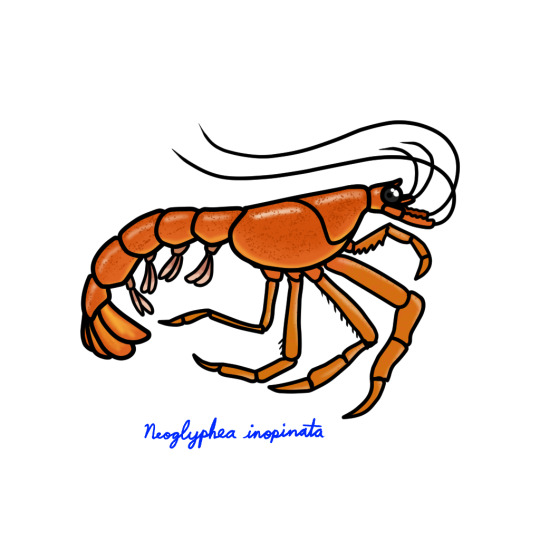
Decapocember Day 10: The infraorder Glypheidea was once thought to be extinct, until two species were discovered. The infraorder has existed since the Triassic period!
26 notes
·
View notes
Text

Art done by me🐟✨
252 notes
·
View notes
Photo

Living Fossil
An Atlantic horseshoe crab (Limulus polyphemus) in the mangroves of Ria Lagartos nature reserve, Yucatán. Females can lay up to 20,000 eggs in one night playing an important role in providing nutrient-rich eggs to migratory birds.
by Fernando Constantino Martínez Belmar, Mexico
Mangrove Photography Awards
#fernando constantino martinez belmar#mexico#photographer#mangrove photography awards#living fossil#atlantic horseshoe crab#crab#marine#limulus polyphemus#ria lagartos nature reserve#yucatan#animal#nature
35 notes
·
View notes
Text

Kapow!
#art#drawing#illustration#nautilus#sona#anthro#anthropomorphic#anthro nautilus#marine biology#living fossil#my art#my artwork#artists on tumblr#ocean life#drpumpkins#drpumpkins art
28 notes
·
View notes
Text
Kinda wish more people would talk again about the living fossil trees they found in Australia
The Wollemi Pine tree
Apparently it’s from the time of the dinosaurs
There’s only 90 of them found in the wilds of Australia so there are efforts to grow more for the future and to keep them from going extinct again
I remember as a kid it was a big deal when they 1st found out about them
And thanks to many people efforts you can go see them in the blue mountains botintical gardens here in N.S.W. Sydney from some they have managedto grow
#living fossil#living fossil trees#Wollemi pine#Wollemi pine trees#trees from the age of the dinosaurs#dinosaur#Australia Wollemi pine#fossils
7 notes
·
View notes
Text
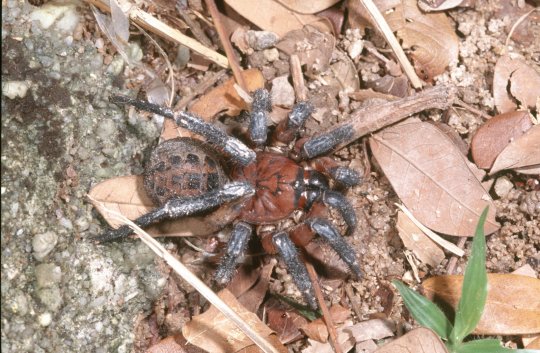
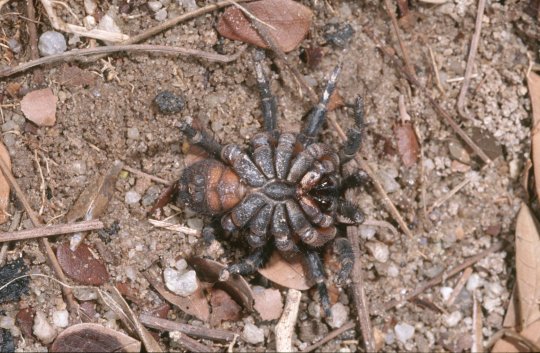
A segmented spider, Liphistius desultor, from Penang, Malaysia. Segmented spiders (from the suborder Mesothelae) are the most primitive living spiders in the world. They have virtually remained unchanged from late Palaeozoic times to today. Sometimes they are referred to as living fossils. (Copyright © Mike Gray, "Spider Origins" Australian Museum).
#liphistius#liphistius desultor#spider#spiders#segmented spider#segmented spiders#primitive#arachnid#arachnids#animal#animals#living fossil#living fossils#mesothelae#penang#malaysia#article#articles#mike gray#australian museum#nature
19 notes
·
View notes
Text
If you're new to my tumblr you've probably not seen this process before. I make all of my models for pewter and metal casting by hand. Sometimes it's Monster Clay but my preference is actually for jeweler's wax. I've been carving for at least five or six years now and feel like I'm just now getting really competent at it. This little coelacanth is about an inch and a half long and will be turned into a little freestanding figure and a pendant when done. I've still got a ways to go but all the big shapes are there.
#coelacanth#living fossil#lobe finned fish#Sarcopterygii#paleo panthera#paleopanthera#palaeo#palaeosinensis#cute#adorable#figurine#pewter#metal casting#pewtersmith#metalsmith#wax carving#jeweler's wax#art#artists on tumblr#carving#unusual#fish
94 notes
·
View notes
Text
🐙Daily Cephalopod Fact:🐙
Chambered Nautilus: The nautilus is an octopus’ cousin. It has more than 90 tentacles — the most of any cephalopod — which it uses to feel and grope along the reefs for food. Unlike those of other cephalopods, a nautilus’s tentacles have grooves and ridges instead of suckers. The nautilus is the only cephalopod with an external shell. Much like zebras, nautiluses can be individually identified based on their striped shell patterns.

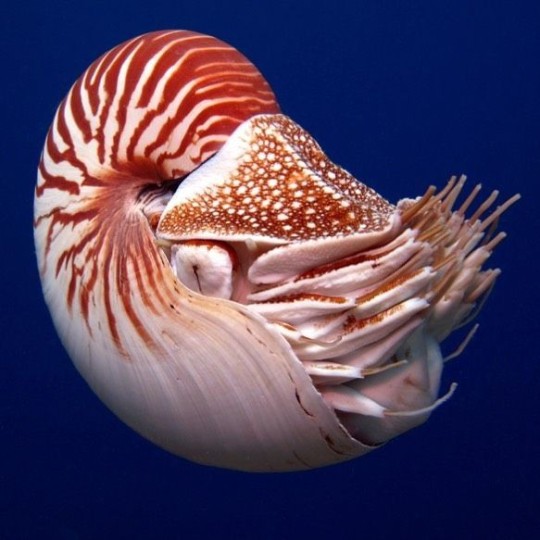
#chambered nautilus#nautilus#octopus cousin#living fossil#respect the locals#cephalopod#daily cephalopod#daily cephalopod fact#cephalopod facts#facts about cephalopods#marine#marine animals#marine biology#marine life#ocean#ocean life#shark blog
99 notes
·
View notes
Text
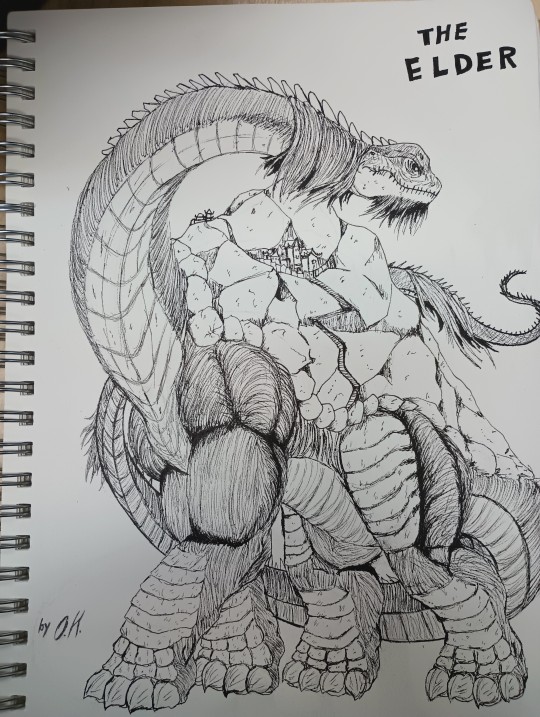
THE ELDER
A living mountain that lay dormant on earth for thousands of years a true living fossil and it's carrying an Temple on its back
#fan art#artwork#drawing pen#reference#giant monsters#giant dinosaurs#sauropod#oldest#worlds largest dinosaur#a living mountain#the elder#kaiju#herbivore#gentle giant#guardian#living fossil#prehistoric#prehistoric creatures#prehistoric dinosaur#biggest dinosaur#mountain size
23 notes
·
View notes
Video
20230714 Ise+Toba 4 by Bong Grit
Via Flickr:
カブトガニも立ち上がると結構キモいな。 @Toba Aquarium, Toba city, Mie pref. (三重県鳥羽市 鳥羽水族館)
#Japanese horseshoe crab#Water#Living fossil#Animal#Creature#Aquarium#Toba Aquarium#Toba#Mie#Japan#Nikon#Nikon D850#AF-S NIKKOR 24-70mm F2.8G ED#flickr
18 notes
·
View notes
Text
Animal of the Day!
West Indian Ocean Coelacanth (Latimeria chalumnae)

(Photo from National Geographic)
Conservation Status- Critically Endangered
Habitat- West Indian Ocean
Size (Weight/Length)- 80 kg; 2 m
Diet- Small fish; Squid; Cuttlefish
Cool Facts- Due to being a common sight in the fossil record, it was thought that west Indian ocean coelacanths went extinct 60 million years ago. However, in 1938, a live specimen was found. Found inside underwater caves, the west Indian ocean coelacanth is a living fossil. Being nocturnal, they exit their caves at dusk and spend the nights hunting. Sadly, these coelacanths may not be around for much longer due to overfishing of their habitats and slow reproduction. 370 individuals remain today, each one being heavily protected.
Rating- 14/10 (Prehistoric becomes modern.)
#Animal of the day#Animals#Fish#Marine animals#Living fossil#Wednesday#August 3#West Indian Ocean Coelacanth#Coelacanth#biology#science#conservation#the more you know
104 notes
·
View notes
Text

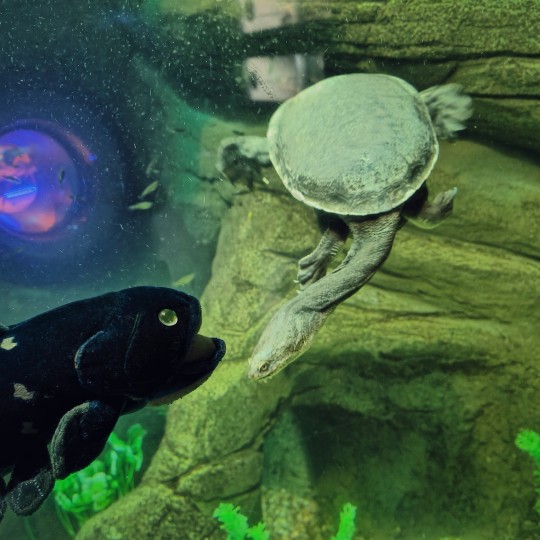
AAAAAAAAAAAAAAAA!
#coelacanth#fish#toy#plushie#plush#sea life#sea creatures#Sea life centre#marine creatures#living fossil
15 notes
·
View notes
